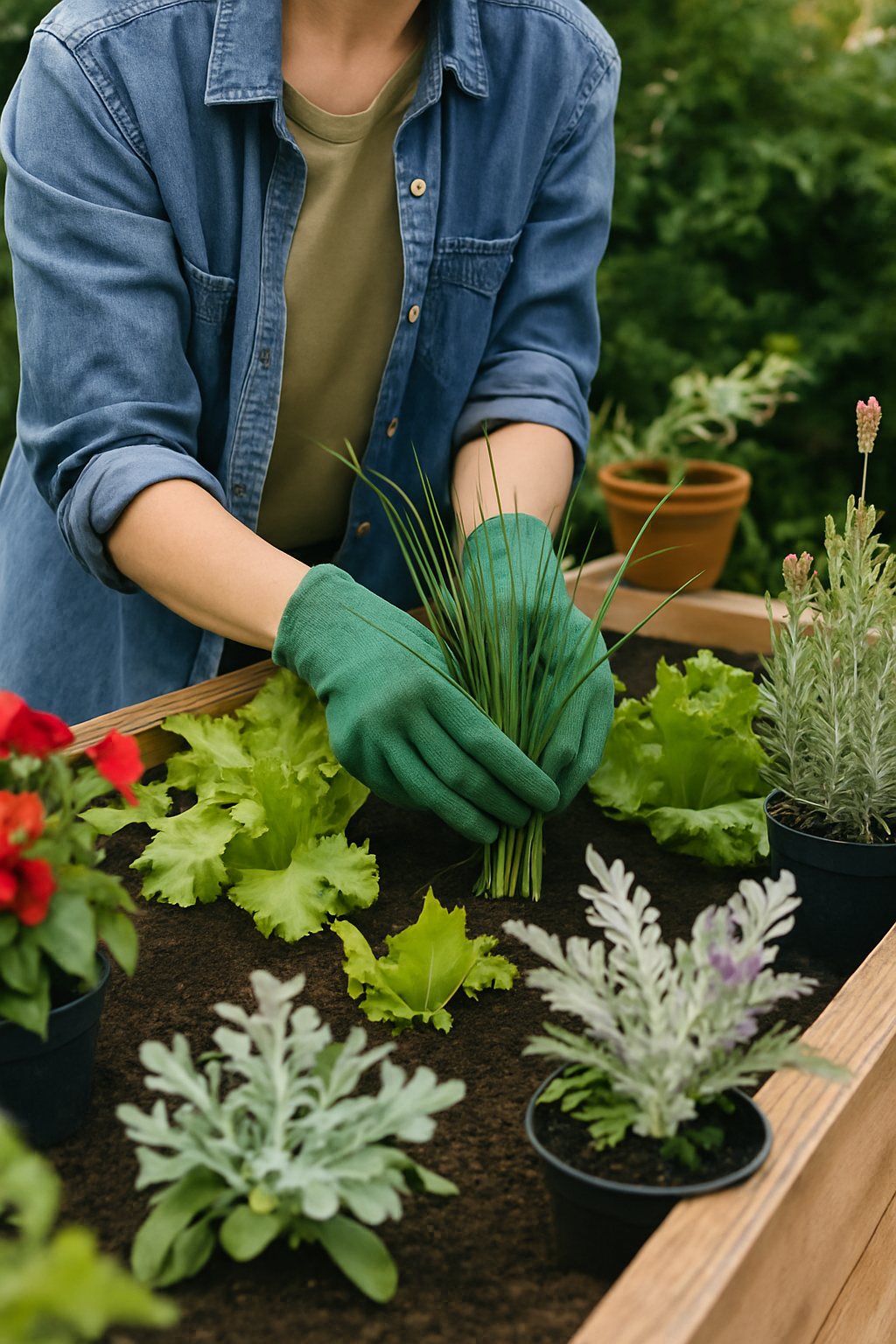Colour is a vital factor in the garden, creating different moods depending on the way it's used. That colour can come from flowers, foliage, bark, pottery, furniture, fences and even artwork. When you're choosing plants to create a colour scheme in your garden, take into account the architectural style of your home and garden, as well as the colours used in the building materials of the house, paths, steps, walls and fences.
Colour can be soothing or exciting, it can be front and centre or something much more subtle. Your garden is the canvas, where you can use flowers like a palette to capture something in your imagination. How do you do this? Here we offer some tips to help you create your perfect colour scheme.
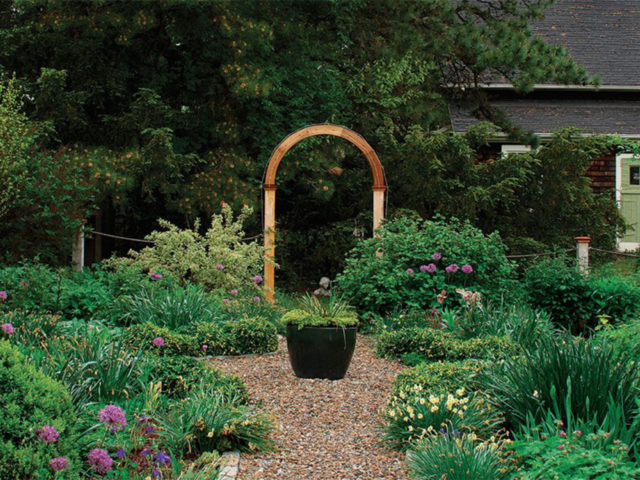
Keep the colours simple, but choose a highlight - hints of yellow brighten quiet pastels. Photo: Ann E. Stratton.
Use that colour wheel
As when painting your house, you can use the colour wheel for your garden. Through this tool, you can hone a single colour into a beautiful palette - you can create all different kinds of garden colour schemes that will evoke different types of moods. Take these three types of colour schemes:
- Analogous: three colours next to each other on the colour wheel
- Complementary: two colours opposite each other on the colour wheel
- Complex: a set of analogous colours plus the complementary colour opposite them on the colour wheel.
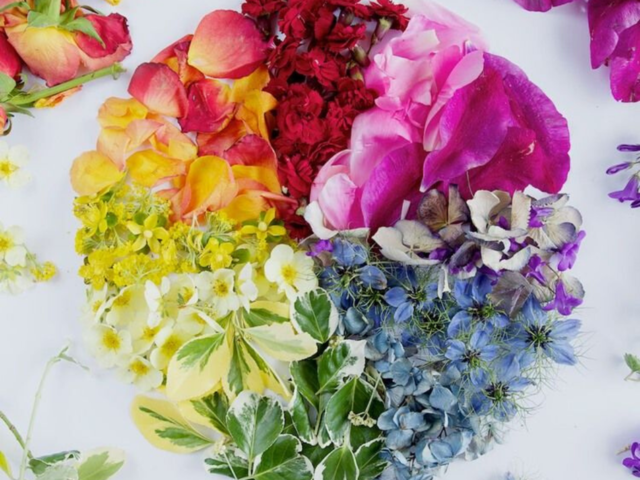
If you are looking to create harmony and some contrasts, you should use some hot or warm colours with some cool or colder colours. Hot colours, such as reds and pinks, work wonderfully in sunny gardens - and are great if you want more startling lines in your garden. However, if you prefer your garden to be more intimate, then use cooler colours such a blues and pale purples, which are perfect for creating softer lines.
When using your colour wheel, remember the foliage, berries and the stalks or trunks. It is not just during the flowering months that you want moments of interest, so you should consider what evergreen elements you can introduce to your garden.
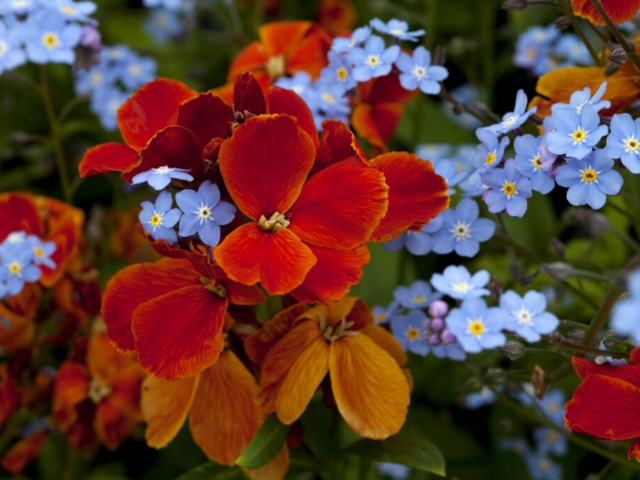
Colour opposites - orange and blue - really stand out in a border.
Classic colour combinations
If experimenting with the colour wheel seems like a step too far for you, then why not use some signature schemes that are proven to work? You can decide to use just the greens of nature to soothe and calm you. There are many shades of green, as well as differences in texture and shape and using a subtle colour scheme can be powerful.
Alternatively, you might want to use whites. There are so many robust plants that bloom white and offer heady scents. You can also mix in some silver into this scheme, keeping to a monochrome scheme but adding light and shade with these subtleties.
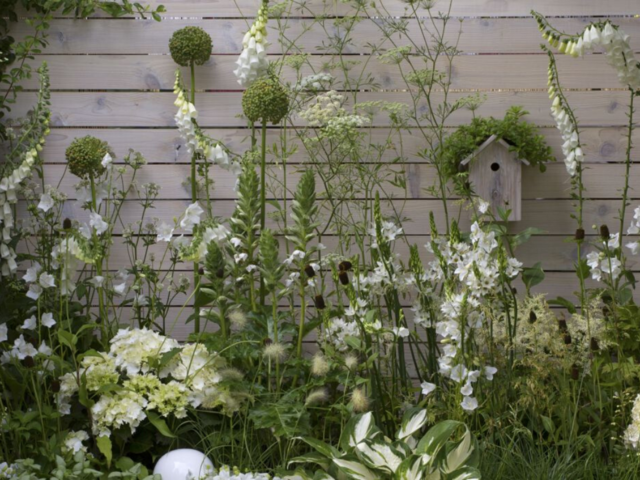
Tip: include a mix of heights, sizes, textures and flower shapes in the simplicity of a white garden.
Pink gardens are classic - planting in pink is nostalgic and a reminder of the cottage-gardens of the past. The great thing about pink is that you can have both cold and warm shades; therefore, you can have light and shade.
If you want some more vibrant, something of a statement, then you should opt for blue. Flowers in the blue family, whether it is a pale turquoise through to violet can add depth and interest; and a purely blue garden can be extraordinarily powerful.
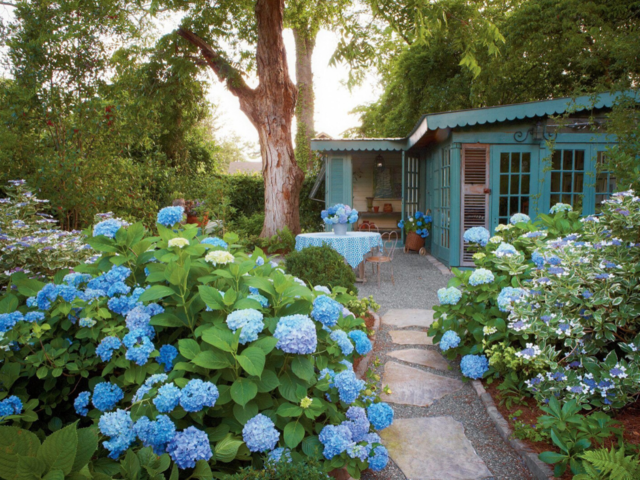
In this Georgia garden, bluehydrangea macrophylla set a stunning path. Photo: Ralph Lee Anderson.
Moving with the seasons
Hot colour combinations of reds, oranges and yellows can be a blast in the summer months - you can plant this to bloom from June through to August. You might then plant some more mooted yellows and bronzes, introducing some complementary blues to welcome in the autumn. For winter, you can go classic red and green, using the evergreens and the berries. Then, as you move into spring, you can use the yellows and blues of the early blooming flowers such as bluebells, daffodils and primroses.
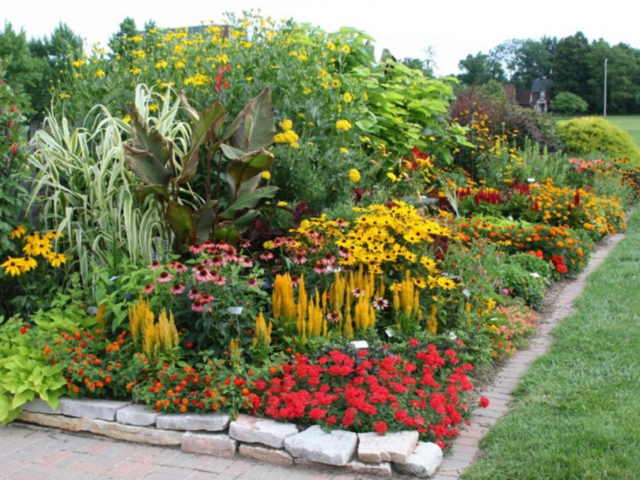
A wide-ranging and varied bed, using multiple types of plants and a wide array of hues in yellow, orange and red. Photo: Champaign County Master Gardener Idea Garden.
The colour scheme you choose for your garden can create different moods in separate areas. Choose the one that works best for you and the right plants to enjoy year-round colour!
Want to learn more about garden design? Take a look at our blog articles. And if you are interested in upskilling in this field, we have the right course for you.

